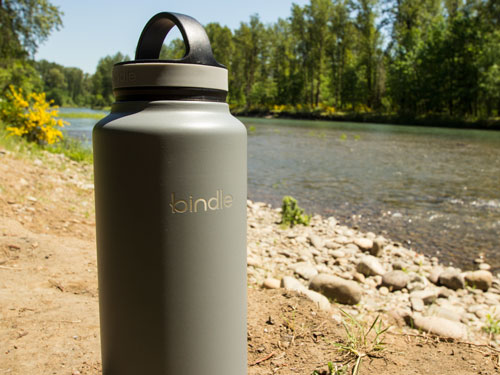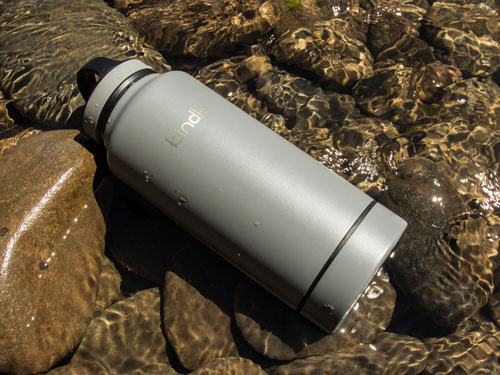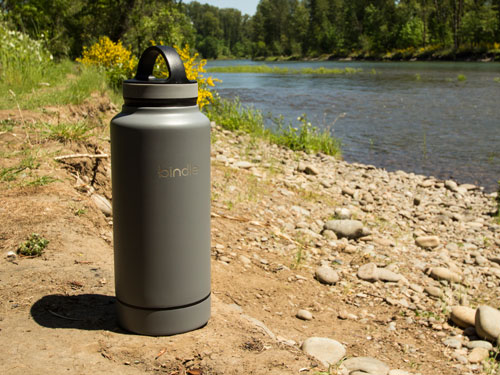Just about everyone has one (or several!) or has at least seen the stainless steel, double-walled vacuum-insulated water bottle. There is no shortage of them on the market nowadays. But despite the numerous companies making them, there is very little variety in the function of the bottle. You almost always get something that keeps something hot for a while and cold for a little longer. There will be variations in the caps that are available, but otherwise there isn’t much difference in the functionality.
Enter the Bindle Bottle. I first spotted the Bindle Bottle on Kickstarter and was intrigued by the idea of combining storage abilities in a water bottle. The bottle is great for people who often forgo the ritual of assembling a daily carry and want a package they can assemble and forget about. It’s also good for times when you’re in a situation where you’re not wearing clothing with a lot of pockets, i.e. a day at the beach. The bottle carries 24 ounces of water plus a 3.3 inch high by 3.2 inch wide storage space. This can hold just about anything you want, from small EDC items to medical gear to a small survival kit. For demonstration I put in a Bic lighter, adhesive wrap and a paracord bracelet. You could also fit a folding knife inside, so long as the closed length is 3 inches or shorter. Something like the Kershaw Ember would fit.
The $39.99 MSRP combined with the lower-than-average fluid capacity of 24 ounces may throw off some potential buyers. But the value is redeemed with the storage capacity and consideration of where this would come in handy. As a SAR guy, I’ve encountered my share of people who could have been greatly helped out by even a minimal survival kit. Another thing a lot of Bindle Bottle users do is keep their keys inside for days at the gym. Another idea is to keep your driver’s license, cards and keys inside the bottle and bury it in the sand to avoid theft at the beach.
If you know someone who likes to hike, but often doesn’t carry anything more than a cell phone and water bottle, this is for them. If you’re the prepared type and looking for a quick-to-grab item from your desk that can carry some essential items, then this is for you. The Bindle Bottle comes in a variety of colors and ships with a standard loop cap. You can also get straw lids and lids for sipping coffee and tea. Check it out here.




